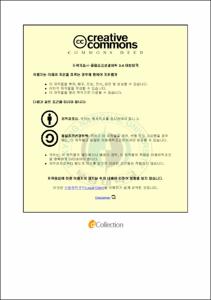동해의 연성과 경성기질에 서식하는 대형저서동물 군집의 생태학적 특성
- Abstract
- This study was performed to investigate the macrobenthic community structure and spatio-temporal variations in soft and hard bottom substrate of the East Sea, Korea. Total macrobenthos was collected using a modified van Veen grab sampler in soft bottom and SCUBA diving method in hard bottom. In the soft bottom of Uljin, a total of 345 macrobenthic fauna were collected. The average macrobenthos density and biomass were 5,797 inds./ m2 and 81.39 gWWt/ m2, respectively. Dominant species in soft bottom area were Spiophanes bombyx, Magelona sp.1, Cadella semitorta and Lumbrineris longifolia. Cluster analysis and nMDS ordination analysis based on the abundance data represented two spatial groups along environmental gradients (Group A: St. 1, 4, 7, 10; Group B: St. 2, 3, 5, 6, 8, 9). Community structure in the soft bottom seemed to be related to the water depth and sediment composition. On the other hand, a total of 117 macrobenthic fauna were collected in hard bottom substrate. The average macrobenthos density and biomass were 2,230 inds./ m2 and 466.27 gWWt/ m2, respectively. Dominant species in hard bottom substrate were Amphipoda spp., Caprella spp., Mitrella bicincta and Temanella turrita. The multivariate analysis based on the abundance data represented two spatial groups and a sample affected by cold water mass (Group U: Uljin samples; Group Co: Pohang sample in July; Group P: other Pohang samples). Community structure in the hard bottom seemed to be related not only latitudinal spatial distinction but temporal cold water mass effect.
- Issued Date
- 2015
- Awarded Date
- 2015. 2
- Type
- Dissertation
- Publisher
- 부경대학교
- Affiliation
- 부경대학교
- Department
- 대학원 해양생물학과
- Advisor
- 오철웅
- Table Of Contents
- CONTENTS
LIST OF FIGURES iii
LIST OF TABLES v
Abstract vii
1. Introduction 1
2. Materials and methods 4
2.1. Sampling 4
2.1.1. Soft bottom 4
2.1.2. Hard bottom 4
2.2. Statistical analysis 5
3. Results 7
3.1. Soft bottom 7
3.1.1. Environment 7
3.1.2. Macrobenthic characteristics 12
3.1.3. Dominant species 17
3.1.4. Ecological indices 21
3.1.5. Macrobenthos community 25
3.2. Hard bottom 30
3.2.1. Environment 30
3.2.2. Macrobenthic characteristics 33
3.2.3. Dominant species 37
3.2.4. Ecological indices 39
3.2.5. Macrobenthos community 41
4. Discussion 45
4.1. Soft bottom 45
4.1.1. Environment and macrobenthos 45
4.1.2. Species composition 46
4.1.3. Macrobenthos community 51
4.2. Hard bottom 55
4.2.1. Environment and macrobenthos 55
4.2.2. Macrobenthos community 56
4.3. Conclusion 58
5. Acknowledgement 59
6. References 60
- Degree
- Master
- Files in This Item:
-
-
Download
 동해의 연성과 경성기질에 서식하는 대형저서동물 군집의 생태학적 특성.pdf
기타 데이터 / 2.32 MB / Adobe PDF
동해의 연성과 경성기질에 서식하는 대형저서동물 군집의 생태학적 특성.pdf
기타 데이터 / 2.32 MB / Adobe PDF
-
Items in Repository are protected by copyright, with all rights reserved, unless otherwise indicated.